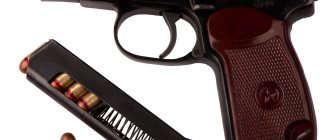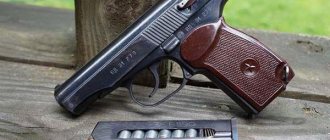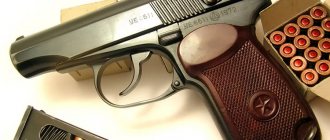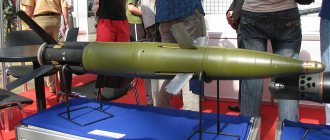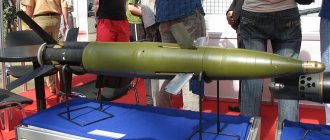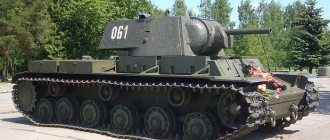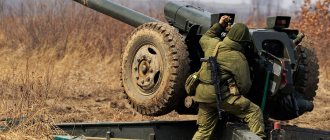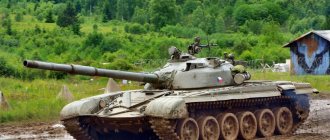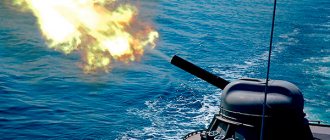One of the most pressing questions for both novice players and players with a decent amount of battles in the game “world of tanks” is which tanks to upgrade? It is quite difficult to answer this question unequivocally, since each tank in the game, depending on its class, nation and level, has its own advantages and disadvantages, therefore, for each player, one or another tank in the game is a priority. Important parameters of military equipment of any nation and level are armor, rate of fire of the weapon, and damage from the basic projectile. But still, for most fans of the game, the most important parameter is the rate of fire of the gun, so one of the common questions that can be found on the forums is what is the fastest firing tank in the world of tanks?
Rate of fire is the ability of a gun to fire a certain number of shots per minute, and since the developers of World of Tanks tried to make the game more realistic, this parameter is not the least important. Undoubtedly, the fastest-firing tanks in any nation are low-level military equipment, mainly light and medium tanks. But, at the same time, among heavy tanks there are also combat vehicles with a good rate of fire of the gun.
If we consider the tanks of all nations, then the fastest-firing combat vehicles are represented in the British nation, while almost all tanks of any branch can boast of a rate of fire, with the exception of high-level artillery. Next, we'll look at some of the fastest-firing tanks in the game.
Forces that reduce flight range
Currently, design engineers are developing more and more new models to increase the firing range of modern tanks. But no matter how hard they try, it will not be possible to completely eliminate the factors that reduce the projectile’s flight range.
In theory, if no outside forces acted on the projectile during flight, it would fly in a straight line. But under the influence of gravity, it is attracted to the ground, loses its original speed and flight range, and changes its trajectory to a parabola.
In addition, any flying body is subject to the force of air resistance, which not only reduces the flight speed, but also tends to overturn the projectile and give it a vertical rotational movement. By reducing the influence of these factors, it is possible to ensure that the maximum firing range of the tank becomes greater.
Automatic safety switches: classification and differences
In addition to residual current devices, which are not used individually, there are 3 types of network circuit breakers. They work with loads of different sizes and differ in their design. These include:
Modular AV. These devices are installed in household networks in which negligible currents flow. Typically have 1 or 2 poles and a width that is a multiple of 1.75 cm.
- Molded switches. They are designed to operate in industrial networks with currents up to 1 kA. They are made in a cast case, which is why they got their name.
- Air electric machines. These devices can have 3 or 4 poles and can handle currents up to 6.3 kA. Used in electrical circuits with high power installations.
The main ways to increase firing range
To reduce the impact of gravity, you can resort to only one method - to reduce the weight of the tank projectile. Measures to reduce weight are carried out extremely rarely, because the penetrating ability of the head also depends on it.
By reducing the force of air resistance, the projectile is given a special streamlined shape, which improves its aerodynamic properties. The head is sharpened, and the waist part is beveled at a certain angle. To prevent the flying ammunition from tipping over, it is given its own rotational motion.
To make the projectile rotate around its own axis, special spiral-shaped channels are cut into the barrel before installation on the tank. In this case, the firing range increases, but another problem appears - derivation, or deviation of the projectile to the right or left from the firing line.
The direction of the displacement in the vertical axis depends on the direction of twisting of the channels inside the barrel. If they go up to the right, then the flying projectile will deviate to the right, and when aiming, the gunner needs to take lead to the left.
Flight speed and trajectory
There is another factor that affects the flight range - the initial speed of the projectile. Accordingly, the lower the initial acceleration, the closer the enemy tank should be located. The firing range also depends on the throwing angles, which, in turn, are again determined by the initial speed. The more meters per second the cannonball travels during flight, the smaller the angle must be set to hit the target.
All of the above factors - derivation, throwing angle, initial flight force - set the trajectory of the projectile. The main task facing engineers at this stage of development of tank technology is to give the projectile a more direct glide path - a vertical flight line. Now it is a parabola.
Best tier 6 tank destroyer: M18 Hellcat
US M18 Hellcat anti-tank self-propelled gun, also known as the “hell cat” and “witch”. This vehicle owes its nicknames in the game to the translation of its name and its combat characteristics. It embodies the main qualities of the AT - powerful weapons and stealth for ambush tactics. In the old days, she was a real “imba” at her level, so back in patch 0.9.3 she was nerfed, but still this does not prevent her from bending over in random situations.
Firepower
Here we see one of the best gun information in the game, 1.63 sec. Good accuracy, good one-time damage and an acceptable rate of fire allow you to deal about 1767 units of damage per minute. The damage indicator is not the highest, but one of the most stable due to the characteristics of the weapon:
Penetration by armor-piercing shells is weak, but sub-caliber shells have an extremely high penetration rate, and they also have a good flight speed. Ammunition characteristics:
Other characteristics
Now let's move on to an analysis of survivability, mobility and camouflage.
The health reserve is average for a level 6 tank destroyer, and the armor is rather purely symbolic, so when playing with the M18 Hellcat you should rely solely on excellent camouflage. The Hellcat may not have great grace (maneuverability is very mediocre), but it has a high maximum speed, which allows you to quickly take an advantageous position or change direction. At the same time, one of the clear advantages was the high visibility of 370 meters and excellent communication range.
Thus, taking into account all the characteristics of the vehicle and its features, it is safe to say that the M18 Hellcat deserves the title of the dominant tank destroyer at tier 6.
Effective firing range
They call one main indicator of the effectiveness of guns that are installed on anti-tank guns and on a tank - the firing range of a direct shot, that is, the distance that the projectile will fly, deviating from the vertical trajectory at a distance not exceeding the height of the target being hit. If we talk directly about tanks, then the height of the glide path should be no more than 2 meters.
In order to improve the defense of positions and make it more stable, it is necessary first of all to increase the range of a direct shot. Increasing the distance at which effective fire can be conducted on enemy equipment, combined with the massive use of tank guns, makes it possible to increase the effectiveness of defense.
Design engineers are striving to increase the initial speed of the projectile so that the target firing range of the tank becomes higher. The effective fire distance indicator is directly proportional to the initial acceleration of the ammunition - it is ten to twenty percent higher than the initial “swiftness”. For example, at a speed of 1000 m/s, the flight range will be 1100-1200 meters.
Best Tier 6 Heavy Tank: OI
This vehicle combines two main qualities characteristic of the best heavy tank - high protection and firepower. True, he pays for them with poor mobility and large dimensions.
As the Roman Emperor Octavian Augustus liked to say: “Hurry, don’t rush.” It is under this slogan that most battles on the Japanese OI heavy tank take place.
The main feature of this vehicle is its 150 mm gun.
A high-explosive bomb with high one-time damage at the sight of O-I makes cardboard equipment even at level 8 tremble. Poor accuracy and tracking make this tank only suitable for close combat, but this is precisely the role of the heavy. Many players fell in love with this gun with land mines, because there is no need to look for penetration zones, you just need to point the gun at the enemy and shoot.
It is precisely because of the lack of the need to target less armored areas that this branch of tanks received the nickname “drunkard’s tank” - you are guaranteed to cause damage wherever you don’t hit it.
But don’t forget, shooting at vulnerable spots increases the likelihood of causing more damage, so don’t neglect targeting weak areas.
O-I has at its disposal an alternative weapon: with better reloading, penetration, aiming, spread and one-time damage of 300 units, but it is more demanding of the player’s skills and will not bring such fun and pleasure as a howitzer with an alpha strike of 910 units.
Why OI and not KV-2?
Of course, all players are familiar with the Soviet KV-2, which at level 6 also has a high-explosive weapon in its armament, which is not inferior in firepower:
Considering that high-explosive shells are more often used in battle, it is difficult to judge the average damage; it all depends on the armor of the enemies and a little on luck, depending on how the high-explosive goes in. By the way, the flight speed of these projectiles for the O-I is 540 m/s, which is 15 m higher than that of the KV-2. The Japanese heavy weight has more comfortable air pressure, aiming time and accuracy.
Reservation and other characteristics
OI has a higher visibility of up to 40 meters, which is quite significant, especially at the end of the battle. The main difference lies in the reservation, which is almost 2 times higher for the “Japanese”.
Such powerful frontal armor of 150 mm at this level is a colossal advantage, because even some heavy tanks of tiers 7 and 8 cannot boast of such armor. The turret is also very well armored and has slight slopes, increasing the chance of enemy shells ricocheting.
At its level, the Japanese OI heavy could be called an imba, if not for several nuances:
- due to its large size, it often becomes a target for artillery;
- vulnerable sides;
- weak dynamics.
In general, this tank can rightfully be considered the pearl of its branch; at the top of the list, it punishes and destroys unwary thin enemies with one shot. The combination of excellent frontal armor and a howitzer guarantees fun and exciting gameplay for tank owners.
Projectile dispersion
The force of a projectile leaving the tank's muzzle also affects the flight time - the higher the acceleration rate, the less time the cannonball will spend in the air. This is of significant importance when shooting at moving targets and reduces the number of errors made when predicting the trajectory incorrectly.
The effectiveness of shooting is also affected by the dispersion of projectiles - the average area of impact of each shot fired at the target. The deviation of the shot from the aiming point increases with the distance to the target. This occurs under the influence of various factors, including Coriolis acceleration. It is impossible to completely eliminate scattering.
American heavy – T57Heavy
Surely many people have this American monster in their hangar, as it is an excellent device for smashing almost any opponent to pieces. It has all the most necessary gaming technical characteristics for playing a strategically competent and comfortable game.
The T57Heavy tank has a four-round drum, which allows you to lure the enemy out of cover with a series of salvos. The main thing is to take a competent position in battle and enjoy what is happening.
Firing range
At this stage of development of military equipment, engineers are introducing various means that make it possible to hit enemy forces at a distance of up to 10 km or more. It is impossible to say exactly what the firing range of a tank is in service with each individual army - it is different for each model.
To increase the flight range, designers not only use the methods listed above, but also create new means of firing. Now there are two main types of such weapons:
- ATGM - anti-tank guided missile, part of the armament of most tanks and anti-tank systems, previously had the abbreviation ATGM - anti-tank guided missile.
- BOPS is an armor-piercing finned sabot projectile that is stabilized in the air not due to rotation around its own axis, but due to aerodynamic solutions.
So, for example, the firing range of the T-90 tank with ATGM guns is about 5000 meters, and it is possible to fire to kill with BOPS guns at a distance of 0.1 kilometer.
Not without a flaw
Medium tank T-34
At the same time, the T-34, of course, was far from ideal. The tank also had certain shortcomings. First of all, this concerned the human factor. Of course, war is not a resort, and a tank is far from a five-star hotel, but still, even in such vehicles a soldier should be comfortable and relatively comfortable. However, the T-34 was so cramped that the loader had to stand on a box of shells, while the cartridges fell under his feet. The commander had to perform the functions of a gunner, so while taking aim, he could not fully assess the picture of the battle. However, to be fair, it is worth noting that the first samples of the tank were especially cramped, and subsequently the area of the turret was increased.
Soviet postage stamp depicting the T-34. (wikipedia.org)
Among other shortcomings of the tank, they usually note poor optics, which did not give a chance to aim from afar, as well as rather thin armor. But the armor had advantages of a different kind: the armor plates were located at an angle, and enemy shells most often hit them tangentially and could not penetrate them.
Armament of the T-90 tank
The main weapon of the T-90 tank is a 125-mm smoothbore cannon, which is paired with a machine gun mount and mounted on trunnions, providing greater flexibility when aiming at a target. The stabilization system is represented by the “Jasmine” design. The new gun has great shooting accuracy and fast reloading - about 6.5 seconds due to the automatic loader.
One of the exceptional features of the gun is the ability to fire guided missiles. The firing range of the T-90 tank with ATGM guns is 5 km. This is ensured by modern designs of both guidance systems and the missile itself.
The missile control complex is represented by a laser guidance channel with a ballistic computer, an automated control unit and the shots themselves, which are fired by guided missiles for a tank gun. The presented engineering solutions make it possible to hit both stationary targets and those moving at speeds of more than 70 km/h with an accuracy of more than 60%.
Best level 6 self-propelled gun: M44
The American M44 artillery has impressive power even after the well-known nerf to the art, when the damage was significantly reduced. This self-propelled gun feels like it plays cheerfully and cheerfully, just like before.
In order not to be unfounded, let's immediately move on to comparing all artillery at level 6.
Firepower
The one-time damage is not the greatest, but the rate of fire and aiming time are among the best. But the most important thing is the excellent guidance angles, which allow you to control a large area; not a single sixth-level self-propelled gun can even closely compete with it in this regard. The gun's performance allows you to quickly aim at a target and fire, but many enemies at level 6 have not yet upgraded their commander's "lamp", so the M44 is a threat to unwary enemies.
Armament of the T-80 tank
The T-80 tank became famous for being the world's first combat vehicle with a gas turbine engine. It allowed us to reduce the time required to prepare the machine for further operation. Due to the fact that there was no longer any need to warm up the engine, the car could:
- Start driving immediately in above-zero temperatures.
- Proceed with redeployment 2-3 minutes after starting the power plant at an ambient temperature of -18 degrees Celsius.
- Start driving after 20-30 minutes in more severe climate conditions.
At the moment it is an outdated model, but is still in service in some countries. Was developed in 1976. The main weapon is a 125 mm 2A46-1 type gun.
The firing range of the T-80 tank from the main gun is about 3,700 meters. At the beginning of its production it was not equipped with guided missiles. Subsequent modifications of the equipment acquired ATGM installations, and the missile range was about 5 kilometers.
Armament of the T-64 tank
The main battle tank T-64 was produced in the 70-80s of the last century. Despite its advanced age, this technique boasts solid characteristics. The main firepower of the vehicle is represented by a smooth-bore 125 mm cannon, which can fire 4 types of projectiles - sub-caliber, cumulative, high-explosive fragmentation and guided missiles.
The performance characteristics of the T-64 tank reflected the firing range of its weapons. ATGM guns can hit targets at a distance of more than 10 thousand meters. The anti-aircraft system, represented by a 12.7 mm belt-fed machine gun, can hit a target in the air at a distance of up to 1.5 km. The guns deliver precise strikes to both stationary and moving targets.
In order to make the firing range of the T-64 tank more effective, the cockpit has several optical aids at the disposal of the vehicle captain and gunner. The devices are equipped with a 9x optical zoom and a night target recognition system. Despite its advanced age, the vehicle is in service in many countries around the world.
Firepower of German Tiger tanks
According to British reports on tests of captured tanks and German reports from the African and European theaters of war according to the "Army Tornado Series"
Tactical and technical characteristics show the combat effectiveness of the tank in terms of tactical and strategic maneuverability, weapon power and survivability on the battlefield. Knowledge of the ballistic characteristics of a tank gun allows you to evaluate the combat capabilities of the tank, as well as compare them with the capabilities of enemy tanks. Thus, it is possible to predict possible combat losses and determine the basic tactical principles of using the tank. However, the ballistic characteristics of a gun are by no means the only important indicator of a tank’s combat effectiveness. Mechanical reliability, battlefield survivability and tactics determine the level of casualties to a much greater extent than the armor-piercing ability of a gun.
The firepower of a tank depends on the ballistic characteristics of its gun: armor-piercing ability, accuracy and accuracy of fire, quality of sights, as well as ease and convenience of aiming. Accuracy is determined based on the results of test firing and characterizes the probability of hitting a standard-sized target from a cannon at a distance encountered in practice. However, these results cannot always be applied to a real combat situation. In the German army, it was customary to determine the ability of a projectile to penetrate armor located at an angle of 30 degrees to the trajectory. The corresponding characteristics of the 8.8 cm KwK 36 L/56 and 8.8 cm KwK 43 L/71 guns are shown in the table:
Armor penetration of guns of German tanks "Tiger" and "Royal Tiger"
| 88 mm KwK 36 L/56 | 88 mm KwK43/71 | ||||
| PzGr 39 | PzGr 40 | Gr 39HL | PzGr 39/43 | PzGr 40/43 | |
| 10.2 kg | 7.3 kg | 7.65 kg | 10.2 kg | 7.3 kg | |
| 773 m/s | 930m/s | 600 m/s | 1000 m/s | 1130 m/s | |
| 100 m | 120 mm | 170 mm | 90 mm | 202 mm | 237 mm |
| 500 m | 110 mm | 155 mm | 90 mm | 185 mm | 217 mm |
| 1000 m | 100 mm | 138 mm | 90 mm | 165 mm | 197 mm |
| 1500 m | 91 mm | 122 mm | 90 mm | 148 mm | 170 mm |
| 2000 m | 84 mm | 110mm | 90 mm | 132 mm | 152 mm |
For testing, a rolled homogeneous armor plate was used, which had the following characteristics:
| Thickness, mm | Hardness kg/mm2 | Brinell hardness |
| 81-120 | 95-105 | 279-309 |
| 121-150 | 80-90 | 235-265 |
Quote from the German artillery manual:
“First of all, it should be noted that all the data given here refers to high quality ammunition. The characteristics of “low-grade” ammunition can only be assessed tentatively. Their actual armor-piercing ability may be much worse than the figures given. During acceptance of a batch of ammunition, a certain number of shots (0.5%) are tested. A batch is considered high quality if at least two thirds of all fired shells meet the requirements. Experience shows that such a test sufficiently characterizes the entire batch of ammunition. A complete guarantee cannot be given; there is always the possibility that several shots will not have the proper armor-piercing ability or will be destroyed prematurely. Destroyed ammunition will not detonate the explosive charge. The effect of the projectile inside the tank and the probability of hitting the target are not considered here. Thus, we assume that a shell that penetrates the armor disables the tank. In this regard, projectiles with a bursting charge are especially effective. Armor-piercing shells with different types of cores or cumulative shells cannot always disable a tank on the first hit, since these shells cannot always hit the entire tank crew at once. Quite often, shells that do not even penetrate the armor can partially reduce the combat effectiveness of the tank (as a result of spalling the internal layers of armor or the formation of through holes). The standard is the armor-piercing ability of a projectile relative to armor located at an angle of 30 degrees to the horizontal. The armor-piercing ability of shells relative to armor located at a different angle can be calculated using the following table:
| Ammunition type | Attack angle | |||
| 0 | 30 | 45 | 60 | |
| PzGr. 39 | 120 | 100 | 60 | 40 |
| PzGr. 40 | 120 | 100 | 60 | 30 |
| GrHL | 105 | 100 | 80 | 50 |
Example: armor-piercing ability of PzGr ammunition. 39 caliber 75 mm (Pak 40 gun) at a distance of 1000 meters is 81 mm at an angle of attack of 30 degrees. At angles of attack of 0, 45 and 60 degrees, the armor penetration ability will be 95, 50 and 32 mm, respectively. Typically, cast armor is less strong than rolled armor of the same thickness, but quality cast armor is as good as rolled armor. Heterogeneous armor has the advantage that projectiles often break apart on its surface. However, the mechanical strength of heterogeneous armor is not higher, and sometimes even lower, than that of homogeneous armor.”
8.8 cm Pzgr. Patr. 39 Kw. K. 36
The Tiger tank had 92 rounds of ammunition, while the Panzerbefehlswagen "Tiger" had only 66 rounds of ammunition. It was recommended to fill half of the ammunition with PzGr 39 armor-piercing rounds (armor-piercing ammunition with a ballistic head, tracer and explosive charge), and the other half with Sprgr high-explosive rounds. Sometimes the ammunition was replenished with several PzGr 40 shots (sub-caliber with a tracer and a tungsten core), which were saved in case of the appearance of heavy Soviet tanks and self-propelled guns. Since the PzGr 40 did not have a bursting charge, it had a limited destructive effect on the crew. In addition, four types of cumulative ammunition were developed for the 88 mm gun - Gr 39 HL. The first type of cumulative ammunition was distinguished by high dispersion and low armor-piercing ability, but its undeniable advantage was that it could also be used as a high-explosive ammunition.
Guns 8.8 cm KwK. 36 L/56 and 8.8 cm KwK 43 L/71 were distinguished by high firing accuracy and could hit a target 1000 meters or more away with the first shot. The table shows the probability of a projectile hitting a rectangular target 2 m high and 2.5 m wide (simulating a tank in frontal projection). The results are correct if we assume that the distance to the target is accurately determined before firing. The first number in the column corresponds to the test firing results, and the number in brackets shows the probable deviation. It should be borne in mind that the actual shooting accuracy in combat conditions was lower. As a rule, the accuracy of the first shot was also lower due to errors in determining the distance and other factors operating on the battlefield. However, an average gunner could easily make an adjustment after the first shot, and the accuracy of the second shot differed little from the accuracy indicated in the table.
| 88 mm KwK 36 L/56 | 88 mm KwK 43/71 | ||||
| PzGr 39 | PzGr 40 | Gr 39HL | PzGr 39/43 | PzGr 40/43 | |
| 500 m | 100 | 100 | 100 | 100 | 100 |
| 1000m | 100 | 99 | 94 | 100 | 100 |
| 1500 m | 98 | 89 | 72 | 95 | 97 |
| 2000 m | 87 | 71 | 52 | 85 | 89 |
| 2500 m | 71 | 55 | 74 | 78 | |
| 3000 m | 53 | 61 | 66 | ||
| 3500 m | 51 | ||||
| 4000 m | 42 | ||||
Until April 1944, Tiger I tanks were equipped with a Turmzielfernrohr 9b articulated turret telescopic binocular sight, which provided 2.5x magnification. The optical axis of the sight ran parallel to the gun barrel. Each sight tube had its own sighting reticle. On the left grid in the center were seven triangles separated by 4 thousandths. Using triangles, it was also possible to take a lead when shooting at moving targets. In addition, by comparing the height of the target with the height of the triangle, it was possible to roughly estimate the distance. Triangles were placed on the right grid, as well as a rangefinder grid. The grid was calibrated in the range from 0 to 4000 meters in increments of 100 meters. Since April 1944, Tiger I tanks began to be equipped with a Turmzielfernrohr 9c sight. The sight provided magnification of 2.5x and 5x. At low magnification, the gunner had a large field of view. By setting a high magnification, the gunner could aim the gun at distant targets with relative ease. An adjustable rangefinder scale allowed the gunner to accurately determine the distance to the target.
Markings of sights T 9b (left) and T9b/1
Tiger II tanks were equipped with Turmzielfernrohr 9d articulated monocular sights. This scope also provided 2.5x and 5x magnification. The scale for the PzGr 39 was calibrated in the range from 0 to 4000 meters in 100 meter increments. The second scale for SprGr 43 was calibrated to 6000 meters. The turret of the Tiger I tank was equipped with a hydraulic drive, which took power from the engine. At maximum engine speed, a full revolution of the turret was completed in 60 seconds. The Tiger II tank was equipped with an improved turret drive, which had high and low gears activated by the gunner. In high gear, the Royal Tiger turret made a full revolution in 19 seconds when the engine was running at 2000 rpm, in 25 seconds at 1500 rpm and in 36 seconds at 1000 rpm. Using a hydraulic drive, the gunner carried out rough horizontal aiming, and more precise aiming was provided by a manual drive. The tank commander (Tiger) or loader (Royal Tiger) helped the gunner to rotate the turret manually.
The tank commander found the target, indicated the type of ammunition and range. The gunner caught the target and fired a sighting shot. Based on the tracer trail and the place where the projectile fell, the commander gave instructions to the gunner to make corrections. Tiger tanks could fire without preparation at enemy armored vehicles from a distance of up to 1200 meters. At distances exceeding 1200 meters, it was first necessary to zero in on the target with a range of 200-400 meters. With a certain skill, the gunner could hit a target lying 1200-2000 meters away with the fourth shot. A single Tiger tank could hit a stationary enemy tank 2500 meters away. The concentrated fire of a tank platoon made it possible to hit enemy tanks at distances of up to 3000 meters. The Tiger tank could not effectively hit moving targets more than 2,000 meters away. Within thirty seconds, the Tiger tank fired three shots, achieving at least one hit. Moving at a speed of 20 km/h, the tank could cover 800-1200 meters in an hour of battle. The 8.8 cm KwK 43 cannon had similar characteristics. However, due to the flatter trajectory of the projectile and its high initial velocity, the effective firing range of the “Royal Tiger” was higher. Thus, without zeroing, the “Royal Tiger” hit targets at a distance of up to 2000 meters, and could fire at stationary tanks at distances of up to 4000 meters.
| < Back | Next > |
